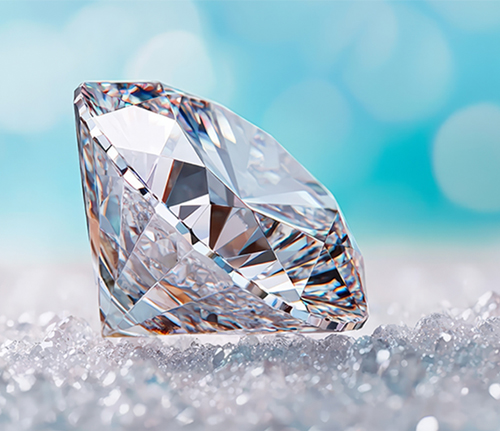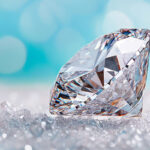When buying jewelry, the material plays a key role in durability, appearance, and maintenance. Whether you're looking for fine gold, sparkling gemstones, or unique natural elements, this guide will help you understand the different options available.
Gold: Understanding the differences

18K gold
18-karat gold contains 75% pure gold mixed with other metals for strength. It has a rich, warm color and is more resistant to tarnish than lower-karat gold. While beautiful, it is slightly softer and may scratch more easily.
14K gold
With 58.3% pure gold, 14K gold is more durable than 18K gold while still offering a luxurious look. It’s a popular choice for everyday jewelry due to its balance of strength and beauty.
Gold plated
Gold-plated jewelry has a thin layer of gold over a base metal (such as brass or sterling silver). While affordable, the plating may wear a little over time, especially with frequent use. So it requires gentle care to maintain its appearance.
Silver and rhodium-plated jewelry
Sterling silver (925 silver)
Sterling silver is composed of 92.5% pure silver, making it a beautiful and affordable choice. However, silver naturally tarnishes over time and needs occasional polishing.
Rhodium-plated jewelry
Rhodium plating is often applied to sterling silver or white gold to enhance shine and prevent tarnish. It provides a bright, reflective finish and adds a layer of protection, though it may wear down over time and need replating.
Precious stones and crystals

Diamonds
Known for their brilliance and durability, diamonds are the hardest natural material. They come in different grades based on cut, color, clarity, and carat weight (the 4Cs). High-quality diamonds sparkle intensely and last a lifetime.
Cubic zirconia (CZ)
Cubic zirconia is a man-made gemstone that closely resembles a diamond but is much more affordable. While it offers impressive sparkle, it is softer than diamonds and may show scratches over time.
Zircon
Zircon is a natural gemstone that comes in a variety of colors, including blue, yellow, and red. Unlike cubic zirconia, zircon is a real mineral and has a brilliant shine, though it is softer than diamonds and requires careful handling.
Gemstones
Natural gemstones, such as sapphire, emerald, ruby, and amethyst, add vibrant color to jewelry. Each stone has unique properties—some, like sapphire, are very durable, while others, like opal, require extra care.

Azurite stone
Azurite is a deep blue copper-based mineral known for its striking color and unique patterns. It is relatively soft and porous, meaning it should be kept away from water and harsh chemicals to prevent damage.
Swarovski crystal
Swarovski crystals are high-quality, precision-cut glass crystals that mimic the brilliance of gemstones. They are an affordable alternative for those who love sparkle but prefer a lower price point.
Unique materials from the Holy Land
Roman glass
Roman glass is an ancient material, originally used in the Roman Empire and now repurposed for jewelry. Excavated from archaeological sites in the Holy Land, these fragments once formed vessels used in daily life centuries ago. Over time, exposure to minerals in the soil has given the glass its distinctive iridescent patina, making each piece a true relic of the past. Worn as jewelry, Roman glass serves as a tangible link to biblical times, carrying a sense of history, faith, and spiritual connection. Due to its delicate nature, it should be handled with care.
Olive wood
Deeply rooted in biblical tradition, olive wood has long been a symbol of peace, faith, and endurance. Sourced from olive trees that have flourished in the Holy Land for generations, this richly grained wood is often used in artisanal jewelry and sacred carvings. Olive trees are mentioned throughout the Bible, from Noah’s dove bringing an olive leaf (Genesis 8:11) to Jesus praying in the Garden of Gethsemane, meaning ‘olive press’ (Matthew 26:36). Lightweight and smooth to the touch, olive wood jewelry carries a connection to the land where faith and history intertwine. To preserve its natural beauty, it should be occasionally conditioned with natural oils.

